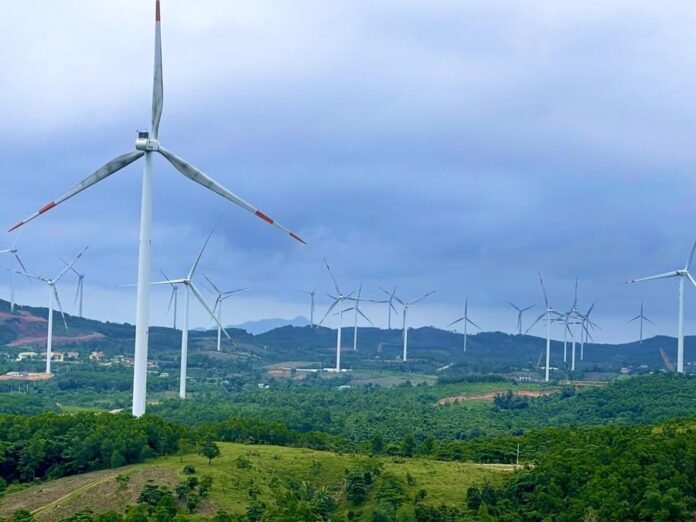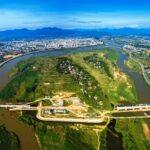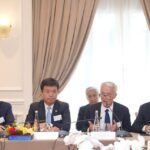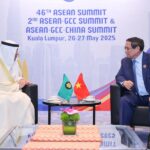The global trend towards reducing the proportion of fossil fuels in electricity generation and embracing renewable and alternative energy sources is undeniable. Vietnam has been actively pursuing this energy transition to achieve its Net Zero goal by 2050, formulating policies and strategies to make it happen. However, this journey towards green energy comes with its fair share of challenges, requiring effective solutions.
CHALLENGES IN THE GREEN ENERGY TRANSITION
At a workshop on “Solutions for Energy Transition towards Net Zero” organized by the Lao Dong Newspaper in collaboration with the Ministry of Industry and Trade on May 29, Assoc. Prof. Dr. Dang Tran Tho, Director of the Institute of Energy Technology (Hanoi University of Science and Technology), pointed out that one of the biggest barriers to Vietnam’s energy transition is the incomplete and unstable policy framework.
Despite the issuance of the adjusted Power Development Plan 8 and international commitments to net-zero emissions, there is still a lack of a legal foundation for renewable energy or energy transition. This results in fragmented policies that lack strong legal binding, making consistent implementation between central and local governments challenging. Moreover, the delay in announcing the post-FIT electricity pricing mechanism has led to a loss of investor confidence and the postponement of many projects.
Mr. Tho also highlighted the rapid development of solar and wind power during 2018–2020, which exposed the inadequacies in the electricity infrastructure, particularly the base load and storage systems. Renewable energy sources are intermittent by nature, dependent on weather conditions and time of day. In contrast, Vietnam’s electricity system relies mainly on traditional, inflexible models, lacking quick regulation capabilities and large-scale energy storage buffers.
One of the most important challenges, often underestimated, in the energy transition is the limitation of technical and technological capabilities. Vietnam’s energy system still operates mainly on a traditional model, not designed to integrate high proportions of variable renewable energy sources like solar and wind power. This leads to difficulties in frequency regulation and voltage stability when renewable energy generation is asynchronous with loads.
Raising capital for green energy projects in Vietnam also faces obstacles. The country lacks a standardized and widely implemented green credit mechanism. Domestic banks are still cautious about lending to renewable energy projects, and domestic private enterprises, especially small and medium-sized enterprises, find it challenging to access medium and long-term loans.
CONSIDERING AND IMPLEMENTING SIX MAJOR SOLUTION GROUPS
Experts believe that to promote renewable electricity and successfully transition to green energy, Vietnam needs to reform institutions, master technology, attract private and international investment, and enhance monitoring and management capabilities.
According to Mr. Doan Ngoc Duong, Deputy Director of the Electricity and Renewable Energy Authority, Ministry of Industry and Trade, to achieve the growth of renewable electricity sources as per the adjusted Power Development Plan 8 and the Net Zero goal by 2050, six solutions should be considered and implemented in the coming time.
Firstly, create a transparent and conducive investment environment, removing barriers related to procedures for power development investment. The Law on Electricity No. 61/2024/QH15, which comes into effect on February 1, 2025, and its guiding documents have essentially addressed the bottlenecks related to investment procedures for power projects, making public the planning and list of investment projects, and providing incentives for renewable and clean energy projects, especially rooftop solar models, offshore wind power, energy storage, and green hydrogen.
In the future, Vietnam needs to continue improving the legal framework in a harmonious, flexible, and effective manner and enhance policies to encourage the production and use of renewable and alternative energy to attract strong investment from domestic and foreign investors in power development projects.
Secondly, Mr. Duong emphasized that a smart and flexible electricity grid system is essential for a successful energy transition. According to Decision No. 768/QD-TTg, the investment demand for the transmission grid in the period of 2026-2030 is estimated at 18.1 billion USD, taking into account the grid infrastructure for power evacuation, inter-regional connections, and modern technology application.
Therefore, in the coming time, it is necessary to expedite investment in strategic transmission lines and modernize the electricity grid with digital and smart technologies to optimize the utilization of renewable and alternative energy sources nationwide.

Thirdly, the energy transition should be implemented within the major electricity-consuming sectors themselves. The industry should promote green production, such as green steel and green cement, and encourage the use of clean energy in industrial parks. Transportation should be electrified, with a focus on developing electric vehicles and the necessary infrastructure. Alongside, there should be a strong promotion of regulations and solutions for energy conservation and efficient energy use.
Fourthly, we need to consider the role of nuclear power in the long term. Nuclear power is a stable and carbon-free source that can serve as a baseload for the power system with a high proportion of renewable energy sources.
According to Decision No. 768/QD-TTg, to enhance energy security, by 2030-2035, nuclear power is expected to reach approximately 4,000-6,400 MW and about 10,500-14,000 MW by 2050. Vietnam is continuing to implement the policy of investing in Ninh Thuan 1 and 2 nuclear power plants, based on research and cooperation with partners possessing modern, safe, and reliable technology.
Fifthly, a modern electricity market and policy mechanism are necessary. “We need to urgently complete the competitive electricity market, develop a carbon credit mechanism, establish emission pricing, promote green finance, and encourage public-private partnerships. These are the foundations for mobilizing private and international resources for the energy transition,” said the Deputy Director of the Electricity and Renewable Energy Authority.
He also emphasized the importance of science, technology, and innovation, including investing in energy storage technologies, AI for power system management, new materials, and especially green hydrogen production. Along with this is the need to enhance the training of high-quality human resources to serve the transition process.
Sixthly, Mr. Duong stated that the most important aspect is ensuring fairness in the transition. Each policy should put people at the center: from coal industry workers, sectors that use a lot of traditional energy, vulnerable communities to small businesses, all must be supported, trained and retrained, and provided with alternative livelihoods, so that no one is left behind on the path towards Net Zero.
“With a clear vision, determination, and collaboration between the government, businesses, people, and the international community, I believe we can successfully achieve this transition, ensuring energy security for economic development with a target of 8% growth in 2025 and double-digit growth in the period of 2026-2030, while sustainably and proactively achieving the Net Zero goal,” Mr. Duong emphasized.
A New ‘Eagle’ in Town: Unveiling the Proposed $67.34 Billion High-Speed Rail Investment in Vietnam – What Sets It Apart?
The THACO Corporation has proposed to the Prime Minister a remarkable initiative to invest in the development of a high-speed rail network spanning Vietnam’s North-South axis.
FPT, Vietjet to Attend Vietnam-France Leadership Forum during President Macron’s Visit to Vietnam
On May 26, coinciding with the state visit of French President Emmanuel Macron to Vietnam, leading businesses and corporations from both nations convened at the Vietnam-France Leadership Forum in Hanoi.





















